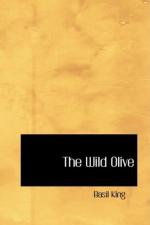Returning to the room in which he had slept, he drew back the green silk curtain covering the north light in order to take his bearings. As he had guessed on the previous night, the slope on which the cabin was perched broke steeply down into a wooded gorge, beyond which the lower hills rolled in decreasing magnitude to the shore of Champlain, visible from this point of view in glimpses, less as an inland sea than like a chain of lakelets. Sunrise over Vermont flooded the waters with tints of rose and saffron, but made of the Green Mountains a long, gigantic mass of purple-black twisting its jagged outline toward the north into the Hog’s Back and the Camel’s Hump with a kind of monstrous grace. To the east, in New York, the Adirondacks, with the sunlight full upon them, shot up jade-colored peaks into the electric blue—the scarred pyramid of Graytop standing forth dark, detached, and alone, like a battered veteran sentinel.
In an access of conscious hatred of this vast panoramic beauty which had become the background of his tragedy, Ford pulled the curtain into place again and turned once more to the interior of the room. It began to seem more strange to him the more it grew familiar. Why was he here? How long was he to stay? How was he to get away again? Had this girl caught him like a rat in a trap, or did she mean well by him? If, as he supposed, she was Wayne’s daughter, she would probably not be slow in carrying out her father’s plan of handing him back to justice—and yet his mind refused to connect the wraith of the night before with either police work or betrayal. Her appearance had been so dim and fleeting that he could have fancied her the dryad of a dream, had it not been for his surroundings.
He began to examine them once more, inspecting the water-colors on the wall one by one, in search of some clew to her personality. The first sketch was of a nun in a convent garden—the background vaguely French, and yet with a difference. The next was of a trapper, or voyageur, pushing a canoe into the waters of a wild northern lake. The next was a group of wigwams with squaws and children in the foreground. Then came more nuns; then more voyageurs with their canoes; then more Indians and wigwams It occurred to Ford that the nuns might have been painted from life, the voyageurs and Indians from imagination He turned to the two framed drawings on the chimney-piece Both represented winter scenes. In the one a sturdy voyageur was conveying his wife and small personal belongings across the frozen snow on a sled drawn by a team of dogs. In the other a woman, apparently the same woman as in the preceding sketch, had fallen in the midst of a blinding storm, while a tall man of European aspect—decidedly not the voyageur—was standing beside her with a baby in his arms. These were clearly fancy pictures, and, so it seemed to Ford, the work of one who was trying to recapture some almost forgotten memory. In any case he was too deeply engrossed by his own situation to dwell on them further.




